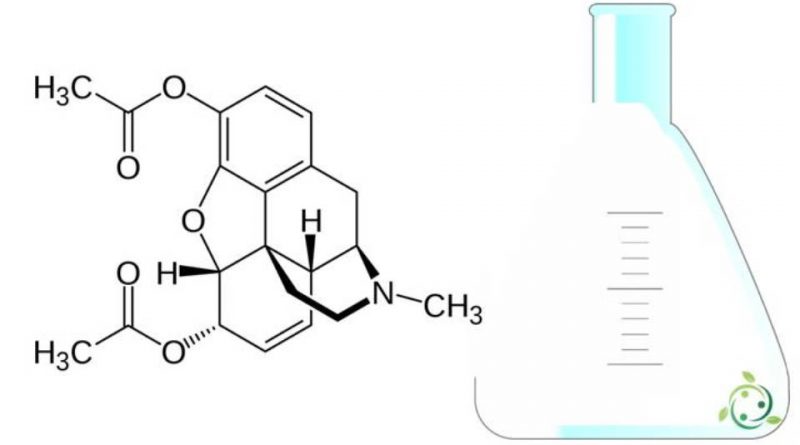Heroine
Heroine
Heroine, whose term in the official IUPAC nomenclature is: (5α, 6α) -7,8-didehydro-4,5-epoxy-17-methylmorphine-3,6-diol diacetate is an alcaloide.
This substance has a brute or molecular formula: C21H23NO5.
Heroine is a derivative of morphine, the main alkaloid of opium (along with thebaine and codeine), also known as diacetylmorphine or diamorphine.
Heroine is a semi-synthetic compound that is obtained by the reaction of morphine with acetic anhydride.
From a physical point of view, heroia, in its pure state, can be found in a crystalline white color, which is the diamorphine hydrochloride salt, or dark brown and very sticky (brown sugar).
Heroine found, in the past, application in medicine for its sedative and analgesic properties, before being prohibited due to the strong side effects, the development of tolerance and the onset of addiction with withdrawal crises at the time of suspension of therapy. .
Heroine causes an addiction identical to that of morphine, but faster and with lower amounts of substance.
Lethal doses are also lower, so the risk of overdose is greater than for morphine. 1 mg heroin may be 2.5 mg to 4.9 mg morphine.
Heroine soon after taking it arrives from the blood to the brain. In the brain, through the blood-brain barrier, it loses acetyl groups, transforms into morphine and rapidly binds to opioid receptors.
The immediate effects of taking this substance are to perceive a wave of pleasant sensations, a “rush” or “euphoric flash” within a few seconds of taking. The intensity depends on the amount of drug taken and the speed with which it enters the circulation and lasts for a few minutes.
Heroine, in addition to a series of negative effects on the health of those taking it, addicts; heroin addiction leads to trying to take a new dose as soon as the effect of the previous one ends; but as a result of addiction, the feelings of artificial wellbeing soon cease to occur, and the drug must simply take normal to stay normal and avoid withdrawal crises.
Once a link of drug dependence has been established, failure to take it can result in a more or less severe withdrawal syndrome. This occurs a few hours after the last intake with the onset of a state of agitation, followed by widespread pain, cramps, runny nose, tremors, panic, sweating, chills, diarrhea, nausea and vomiting. The maximum manifestation of symptoms is between 48 and 72 hours after the last intake, and can last up to a week.
In addition to direct physical harm, heroin consumption has other consequences for health and social life.
Physical –
The following pathologies are encountered on a physical level:
– exposure to the contagion of infectious diseases such as HIV / AIDS and hepatitis B and C, due to the common practice among injection users by using the same syringe among several people;
– pneumonia, as a result of the deterioration of the respiratory system;
– infections of the circulatory vessels and heart valves, due to the presence of bacteria inside the heroin, which is processed without the slightest hygienic control.
Social –
Heroine intake also has serious social repercussions such as:
– compromise of family, friends, and work ties;
– The uncontrollable and constant desire to seek a new dose inevitably compromises personal bonds, because every relationship becomes functional to gaining money to buy more heroin;
– The constant need for money pushes employees toward illegality, getting money through prostitution, dealing, and theft.
Warning: The information given is not medical advice and may not be accurate. The contents are for illustrative purposes only and do not replace medical advice. In addition, some of the contents could generate dangerous situations or damage. The information is for illustrative purposes only, not exhortative or didactic.

